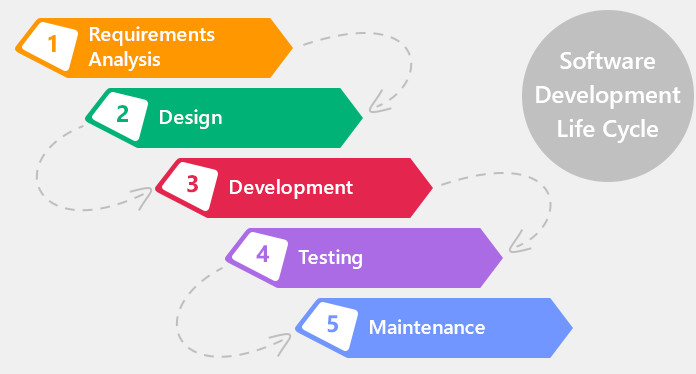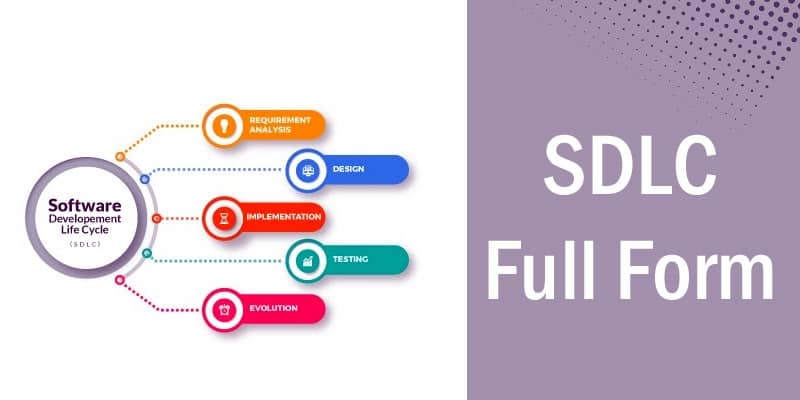Software Development Life Cycle refers to the full form of SDLC. SDLC is defined as a systematic method of creation and development of software, transforming it into an operational one to deliver a high-quality product. The process aims to meet or exceed customer expectations by providing a software system that works efficiently and effectively in the trending information technology infrastructure.
This article contains the full form of SDLC and briefings of its phases and benefits.
SDLC Full-Form | Software Development Life Cycle
SDLC describes a series of phases required for the development process of software where each phase requires deliverables from the previous phase in a life cycle of software development.
SDLC Phases
- Requirement phase– Requirement gathering and analysis of the project initiates the development cycle of software. In this phase, the project manager or a business analyst or senior member of the team, collect and document the information of requirement from the client as per their business needs and forward the same to the development team. After a thorough analysis of the gathered information, the document is made reviewed and approved by the client
- Design Phase– This is the most significant phase which defines the architectural outline of the software and is performed by architects or senior developers. The phase explains how every feature and component should work including essential tools such as programming language like Java, .NET, PHP; databases like Oracle, MySQL, data flow diagrams, flowcharts, decision tree, and decision table, a combination of hardware and software, etc. to provide a platform on which software can run without any problem.
- Build /Development Phase– This phase involves the developers of every level- senior, junior or fresher, to implement the design into the development of a software system. Work is divided into small units which perform the task of building the software and writing code for it. It takes the longest time and is the most sensitive task for the developer.
- Testing Phase– It is the last phase of developing software. The developed software is sent to the testing team, where it checks for the different possible defects in each component. After ensuring that the software is error-free, it sent to the next department for implementation. If there is any defect in the software, the testing team informs the developer about each detail. After fixing or replacing the error, it is again sent for verification until it comes error-free.
- Deployment/ Deliver Phase– When successful testing of the software, it is delivered to the customer for their use. After receiving the product, the customer is recommended to go for beta testing to find out any deviations that occurred from the requirement document. Also, if any defect is encountered while using the software, it will be informed to the development team, and they will take the necessary step. After the solution of all types of bugs and changes, the software finally deployed to the end-user.
- Maintenance phase– The maintenance phase continues until the software’s life cycle comes to an end. When a customer starts using the software, then actual problems start to occur, and at that time there’s a need to solve these problems. This phase also involves changes required in hardware and software to maintain its operational effectiveness.

Benefits of SDLC
- It provides clarity of a project plan to all the involved stakeholders.
- Mistakes are avoided in this process as the next phase of the series starts after the successful completion of its initial stage.
- It allows controlling and measuring any deviations from the set standards of the project.

